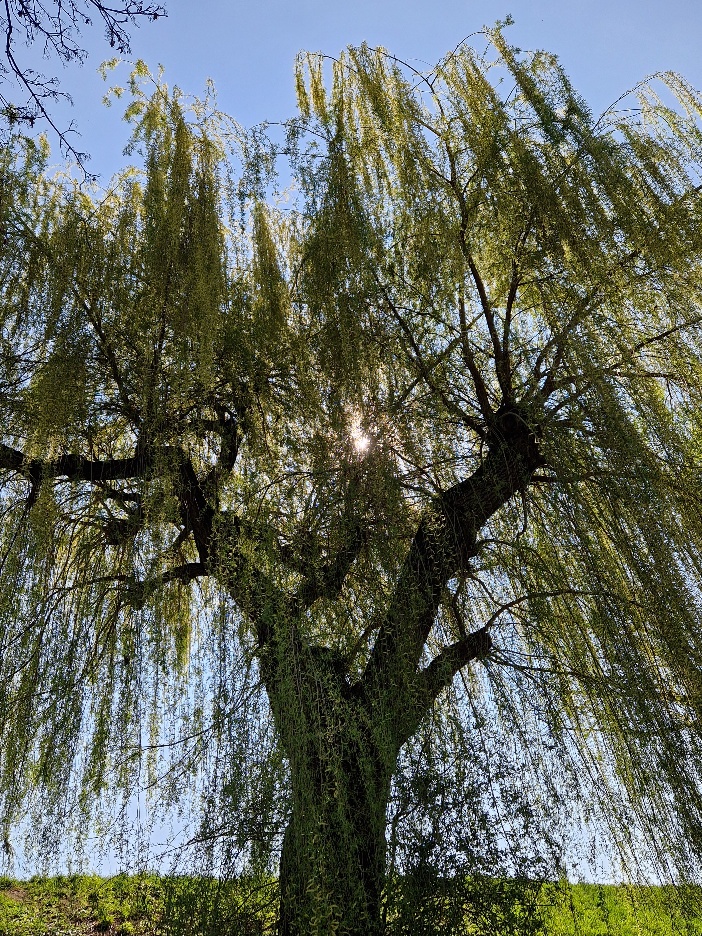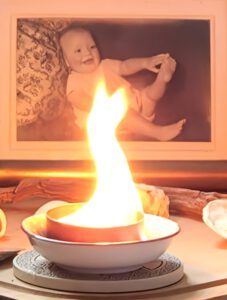Managing your terror all by yourself gives rise to another set of problems: dissociation, despair, addictions, a chronic sense of panic, and relationships that are marked by alienation, disconnections, and explosions. Patients with these histories rarely make the connection between what has happened to them a long time ago and how they currently feel and behave.
Bessel A. van der Kolk, The Body Keeps the Score
I once watched a video of a deer being rescued from drowning only to find herself surrounded by humans, and then she ran immediately back into the water. It’s what panic looks like. An animal feeling of blind propulsion that aims at survival but doesn’t quite get it right. We are so preoccupied with disaster that we step right into it.
Margaret Kimball, And Now I Spill the Family Secrets
Between stimulus and response there is a space. In that space is our power to choose our response. In our response lies our growth and our freedom.
Viktor E. Frankl
From my experience of growing up in a large family in Ireland in the 60’s and 70’s, two very different memories have etched themselves in my psyche from the very earliest of days.
The first gives me a deeply pleasant sensation every time it enters my recall, even all these years later. An infant lying in his pram on the raised embankment by the river in the warm summer sun, within earshot of the steady flow of dark, heavy bog water as it tumbles over the weir immediately below.
High above, the stiff Atlantic breeze is loudly combing the crowns of mature speckled sycamores that line the bank downstream, to my right. Again and again, the two sets of sounds braid themselves into one symphonic sound with each new stiff gust of wind, only to separate once more during the lulls.
The immersion below and suspension above provide the unperturbed frame into which the warm rays of the bright sunshine fall, caressing my entire being with a sense of belonging. I feel alive, joyous, safe, and free!
The second memory is far from pleasant. It plagued my entire early childhood. Archived deep in the vault of my psyche under the title `The Glimpse´, it was not until the fourth decade of my life that I recognized it as a recurring panic attack.
This somewhat nebulous nightmarish experience, – more a menacing state of fear than a happening – came calling upon me each evening at bedtime. As I lie in bed, drifting off to sleep, a state of foreboding arises. All is calm, – too calm.
The room in which I am lying begins to expand, slowly, inexorably, gradually morphing into a huge chamber in which I become tiny, a mere speck of dust. The expansion gradually slows down, coming to a silent halt, and all is once again still, except for the thumping sound in my ears, the sound of my racing heart.
Then, after a brief interlude, the contraction begins, first slowly, then with ever-increasing speed until the room returns to normal size, only then to continue shrinking until the walls and ceiling squeeze in upon my frail frame, leaving me gasping for air. Exhausted, I then come to my senses, full of terror and anguish.
A variation on this theme surfaced from time to time. I lie in the stillness. In my mind’s eye, the surface of a body of water is as still as a mirror. Silence prevails, not a whisper of wind in the air. Then the first gentle ripples, followed by a gradual increase in intensity until it becomes a roaring torrent coming straight at me. I wait in horror, petrified, for the impending obliteration…
These terrifying experiences, and more importantly, the fear thereof, ruled the waking hours of my childhood. The state of anxiety was sometimes triggered during the day by silence, a certain quality of calm energy, or a serene, beautiful piece of music.
`The Glimpse´ returned inexorably each evening in the twilight zone between wakefulness and sleep. It must also have infused my dreams because I remember being fetched, distraught, into my parents’ bed on occasion in the middle of the night.
As I had no language to articulate what was happening, there was no real sanctuary to be found there. In our family most things were worked out in the intellectual realm, a realm beyond the little boy’s reach. I was, however, momentarily comforted by the warmth of my parents´ bodies.
Being returned afterwards to my own cold, empty bed remains an abiding sorrowful memory.
A statement that has come up in countless recent interactions with friends, and acquaintances is: `My childhood was not a safe place.´ While the causes of such experience vary from person to person, the effect seems to be similar in many cases.
The true cause of my own perceived constant jeopardy, which re-visits me from time to time even today, remains a mystery. Despite this, healing is possible.
In one of her recent talks, Claudia Black, one of the founding members of ACA (Adult Children of Alcoholics), a Twelve Step fellowship for people who are committed to recovering from the effects of growing up in dysfunctional environments, made the point that the underlying causes, in terms of experiences, are less important than the beliefs we each developed as children in response to them, beliefs which still govern our behaviour to this day.
Which brings me to the topic of safety.
Whatever it was that transpired in my earliest years, it has left in its wake an unconscious belief, which has become etched in my autonomic nervous system (ANS). This belief is that existential danger is at hand.
The ANS is that part of our organism which keeps our organs operating without our conscious effort. We breathe without deciding to breath. Our heart keep beating, even when we are asleep, without any conscious input on our part.
The ANS acts largely unconsciously and regulates bodily functions, such as respiration, temperature, and digestion. It is responsible for keeping our organism in the steady state known as homeostasis. This is the sweet spot which maximises well-being and the probability of survival.
The fight, flight, freeze, or fawn response, known as the acute stress response, is also activated by the autonomic nervous system.
The difficulty with unconscious embedded programming, such as that which results from childhood trauma, is that, later in life, under stressful circumstances, the ANS tends to take its cues from these , outdated childhood data.
In what could be described as the echo chamber phenomenon, this fear of apparent danger is activated when no such fears are pertinent to the current situation. Today’s situation provides the activation for fears which no longer apply. They have their origin in days long past.
These phantoms, these fears from the past will have a hold over us until we address and resolve them. Until that happens we suffer from neurosis. `Neurotic means repetition of archaic ways of protecting ourselves from what no longer truly threatens us´, writes David Richo in his masterful `When Love Meets Fear´.
C. G. Jung described this dynamic as `defeat by the unreal´.
So, when we feel outraged by the waiter who behaves with abruptness and apparent disdain, it may really be the pain of having been treated in this manner by a once beloved caregiver on whom I utterly depended, all those years ago.
How can we identify if such an echo chamber pattern is at play? By the disproportionate intensity of the reaction. In the restaurant, there is always the possibility of requesting more friendly service, or, if this is not forthcoming, going elsewhere. While this may be an inconvenience, outrage is certainly not the proportionate and, therefore, healthy response.
With practice, it is possible to identify the flags of the echo chamber motif, whereupon the much-needed re-writing of our programming can begin. On further exploration, the root cause, the `original sin´ may be discovered or reveal itself. My father may have had a habit of being absent in my presence, for example, or issues of rejection, humiliation, or abandonment may have been at play.
Whatever the cause, we now have the possibility to identify, embrace, and grieve the experienced losses. All those absences, perhaps, where presence was indispensable yet not forthcoming. Once the grieving process is activated, our focus can be placed on tending the old wounds which can then begin to heal. We gradually master the art of transcending the wounds and associated beliefs which had been the cause of our neurotic fears. We let go and move on.
My method of recognising the flags is helped by pausing in any given challenging situation, then regulating my autonomic nervous system. This can be initiated by any form of corporeal exercises, for example, by taking three deep breaths or feeling into the soles of my feet. With practice, self regulation can be mastered.
Once the fear has been exposed as illusory, and the sense of panic replaced by calm discernment, exploration can begin: What is going on right now? Is danger truly imminent right now?
In most circumstances, the answer is no! Danger may at first indeed feel imminent but once the ANS is regulated and the body calmed, none is to be found. With this discernment, the ruse of the neurotic ego is exposed for what it is. The Wizard of Oz is unmasked.
The ego is simply doing its job of trying its best to protect from even more sadness, fear, and anger. Its judgement, however, is based on false data, the data that was stored in the body on a cellular level in the context wherein the original wounding occurred.
This cellular memory of experiences connects body and mind. The body recalls that exhibiting vulnerability to show true feelings leads to further attacks, humiliation, or abandonment. The specific facts of the situation may long be forgotten but the bodily reactions remain, as fresh as on the day they were first encoded. Never show your true feelings is the message transmitted to our brain.
In recent years, I have added Emotional Freedom Techniques (EFT) to my toolbox of healing resources. EFT (or Tapping) is a technique that stimulates acupressure points by pressuring, tapping, or rubbing while focusing on situations that represent personal fear or trauma.
While tapping the various points prescribed, I say the following affirmation aloud: `I am safe, here and now. I love and accept my self, just as I am.´
This helps in training the mental muscles which open up new possibilities whenever the echo chamber is re-activated. The initial default of clenching up in self-protection or self-righteous justification is intercepted before it can fully kick in. Instead, the golden question presents itself: Is danger imminent?
Are my fears grounded in reality? After the pause, the new reality reveals itself. Though an old script beckons, today there is a new choice.
With compassion I can gracefully decline the default reaction on offer, instead choosing a new response proportionate to the given situation. This is the response of the healing adult, not the helpless child. This makes all the difference.
As with any aspect of healing, change may take some time. Progress is the goal, not perfection. With practice, we can gain mastery over, then rewrite the old scripts which, while once necessary for survival, no longer serve their original purpose.
I still get hijacked and act out at times, though less often than in the past. When it does happen, I can more quickly recognise what has transpired, make amends where appropriate, and return to emotional homeostasis. This `time to recovery´ is a good indicator for resilience.
This re-writing of the default scripts is the bread and butter of recovery, the cornerstone of mental fitness, and the portal to emotional sobriety.









